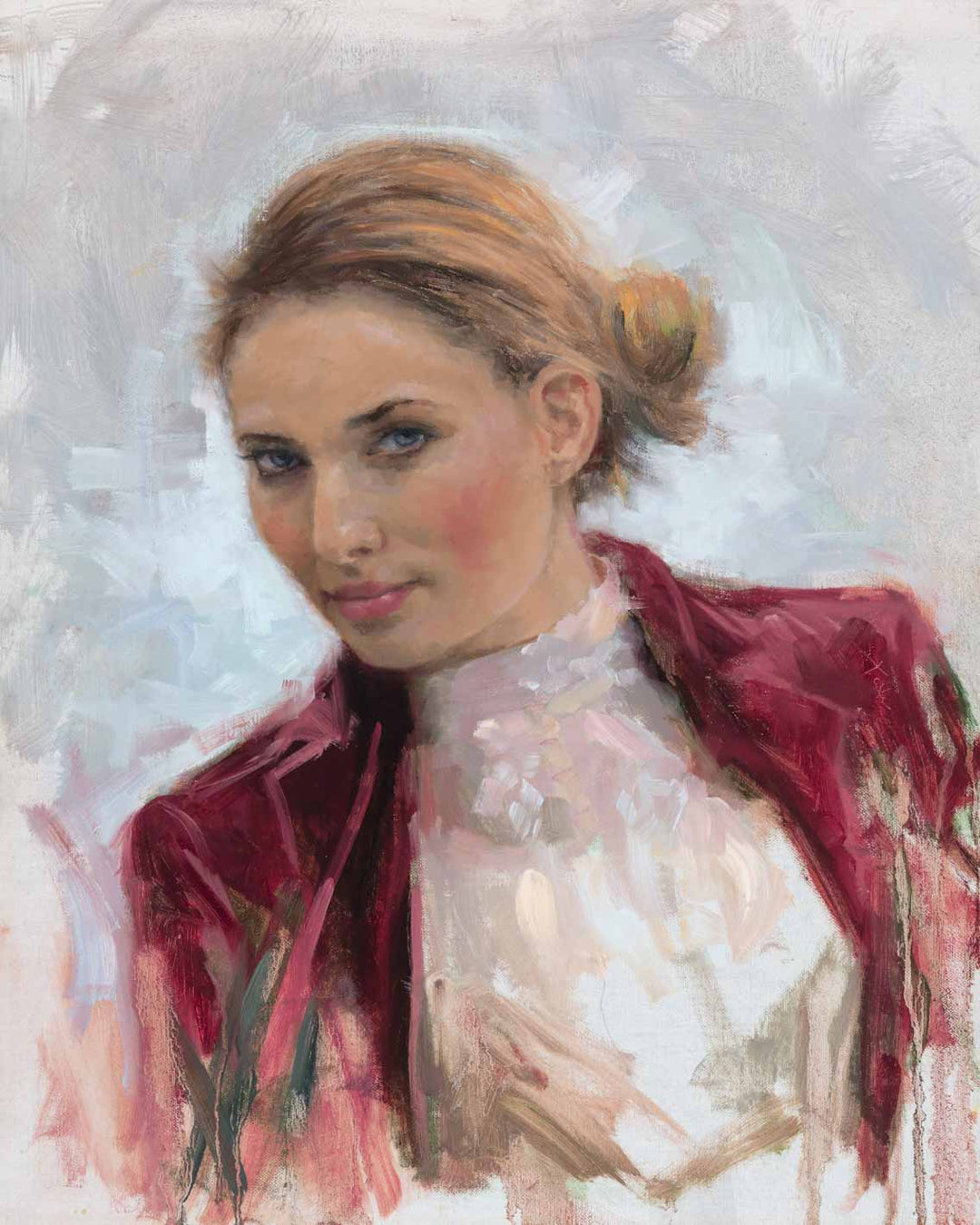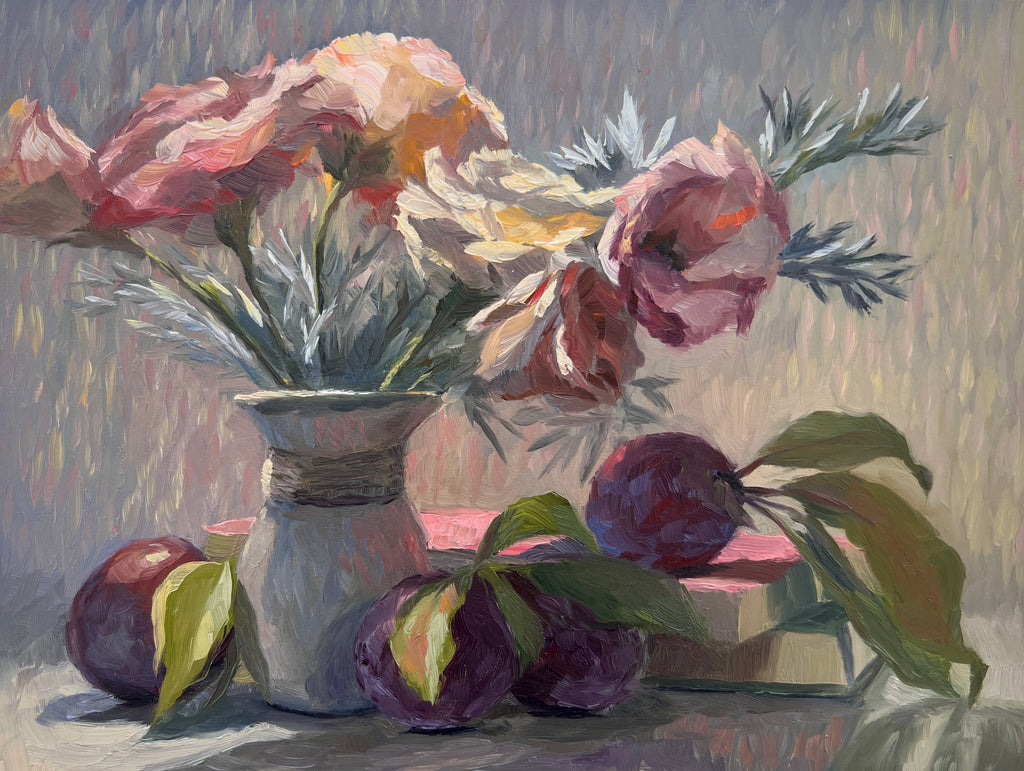Checking out Everything About Oil Paints: An Overview to Understanding Their Charm and Worth
Oil paints have astounded target markets for centuries, supplying a peek right into the artistic mastery of various ages. Their abundant background is intertwined with innovative techniques and extensive psychological expression. Comprehending the materials and techniques behind these artworks can improve admiration. Furthermore, the marketplace for oil paintings offers possibilities for capitalists and enthusiasts alike. As one discovers this fascinating globe, the question develops: what makes an oil paint truly beneficial?
The Background of Oil Painting: A Journey Through Time
Oil painting has origins that date back to ancient times, it really flourished throughout the Renaissance, when musicians uncovered its adaptability and abundant shade potential. Early examples can be traced to the 7th century, with methods evolving significantly throughout societies. The medium came to be prominent in Northern Europe in the 15th century, especially via the jobs of artists like Jan van Eyck, that spearheaded its use for in-depth realistic look and vivid hues. This duration marked a departure from tempera paints, permitting greater depth and appearance. As oil painting spread, it affected numerous artists, bring about masterpieces by prominent figures such as Leonardo da Vinci and Rembrandt. The tool's tradition proceeds, shaping the art world well right into contemporary times.
Comprehending Oil Repaints: Products and Techniques
As musicians check out the world of oil paints, they run into a varied range of materials and strategies that define this medium. The primary elements of oil paint consist of pigments, which supply shade, and drying oils, such as linseed, that bind the pigments and assist in application. Different ingredients can change the paint's appearance and drying out time, boosting versatility. Strategies like glazing, where clear layers are accumulated, and impasto, which involves applying thick paint, permit different visual effects. Furthermore, using brushes, palette knives, and even fingers can produce unique textures and finishes. Recognizing these products and methods allows artists to fully express their imagination and attain the preferred impact in their art work.
The Duty of Color in Oil Paintings
Shade plays a critical role in oil paints, affecting both visual appeal and emotional resonance. Understanding shade concept basics, including the partnerships in between shades, can enhance a musician's capability to convey state of mind and environment. Additionally, grasping color mixing techniques enables greater deepness and splendor in a paint's combination.

Shade Theory Basics
Understanding color concept is crucial for musicians dealing with oil paints, as it forms the structure for creating unified and aesthetically appealing compositions. Shade concept encompasses the research of exactly how shades engage, the color wheel, and the partnerships between main, additional, and tertiary shades. Artists use complementary colors to boost contrasts and produce prime focus, while similar shades promote unity and cohesiveness within a piece. In addition, the concepts of amazing and cozy shades affect the perception of depth and area in a painting. Realizing these principles enables musicians to control color effectively, assisting the viewer's eye and interacting their intended message. Mastery of shade concept ultimately enhances a musician's ability to communicate feelings and ideas with their job.
Psychological Impact of Color
The psychological influence of color in oil paintings plays a crucial function in how customers regard and connect with art work. Shades evoke particular sensations and state of minds, affecting the customer's emotional state. Cozy tones like oranges and reds can produce a feeling of heat and power, while cool tones such as blues and greens frequently evoke calmness or introspection. Artists strategically choose color schemes to enhance narrative components, guiding the target market's psychological trip. The saturation and comparison of colors even more enhance these effects, drawing interest and creating emphasis. Ultimately, the interaction of shades in oil paints not only enhances their aesthetic charm however likewise acts as a powerful tool for psychological expression, enhancing the customer's experience and interpretation.
Color Combining Techniques
While lots of elements of oil painting contribute to the total make-up, understanding shade blending strategies is crucial for accomplishing preferred effects and deepness. Color blending can be come close to through numerous approaches, including the subtractive and additive processes. Additive blending includes integrating colors of light, while subtractive mixing depends on pigments, where shades mix to develop new tones. Artists commonly use a minimal combination to develop harmonious works, recognizing the relationships between key, second, and tertiary shades. Strategies such as glazing and scumbling even more improve depth and luminosity. By skillfully blending colors, a musician can evoke emotions, create prime focus, and achieve a feeling get more info of realism, ultimately boosting the painting's visual and emotional effect.
Famous Oil Painters and Their Iconic Functions

Well known for their proficiency of shade and strategy, oil painters have actually created a few of the most popular art work in background. Renowned artists like Vincent van Gogh captivated audiences with his emotive brushwork in "Starry Night," while Claude Monet's "Impression, Sunrise" prepared for Impressionism. Leonardo da Vinci's "Mona Lisa" remains an enduring symbol of artistic genius, showcasing his skill in capturing human expression. Rembrandt's "The Night Watch" shows his ingenious use of light and shadow. Various other remarkable numbers include Pablo Picasso, who transformed modern art with his strong trial and error in jobs like "Les Demoiselles d'Avignon," and Georgia O'Keeffe, whose vivid representations of flowers and landscapes helped define American modernism. Each musician's unique style contributed considerably to the oil paint landscape.
Exactly how to Examine the Top Quality of an Oil Painting
Examining the high quality of an oil painting includes a cautious assessment of craftsmanship techniques, along with an analysis of color and structure. Observing brushwork, layering, and the application of paint can expose the musician's skill level. In addition, the interplay of shades and the total plan of aspects contribute significantly to the painting's visual worth.
Assessing Workmanship Methods
A thorough evaluation of craftsmanship methods is necessary for identifying the top quality of an oil painting. Critics ought to initially analyze the application of paint; thick, textured brushstrokes might suggest a competent hand, while overly consistent applications can suggest a lack of deepness. oil paintings for sale. The layering technique is additionally vital; the existence of lusters and varied density can enhance brightness and intricacy. Furthermore, the top quality of the products utilized, such as the canvas and pigments, plays a considerable duty in sturdiness and general visual. Focus to information in aspects like sides and changes between colors reflects the musician's commitment to their craft. Inevitably, these techniques add to the painting's psychological impact and market price, working as signs of the artist's ability and intent
Analyzing Shade and Composition
While examining the quality of an oil painting, one have to concentrate on the interplay of shade and composition, as these components are fundamental to the art work's overall influence. Color options can stimulate feelings and establish mood; as a result, the musician's scheme must be taken a look at for consistency and comparison. A healthy make-up routes the viewer's eye and creates a feeling of unity. Musicians often employ techniques like the guideline of thirds or leading lines to improve aesthetic passion. In addition, the use of light and shadow can add deepness, boosting the three-dimensionality of the paint. Inevitably, an effective oil painting marries shade and composition, involving the visitor and welcoming a deeper gratitude of the artist's vision and technique.
Taking care of and Preserving Oil Paintings
Appropriate care and preservation of oil paints is crucial for maintaining their integrity and longevity. To safeguard these artworks, it is important to show them away from direct sunlight, which can create fading and staining. Preserving a stable setting with controlled temperature and moisture additional aids in protecting against damages. Cleaning should be done delicately using a soft, completely dry towel, staying clear of any type of harsh chemicals that can hurt the paint or varnish. Regular examinations for indications of wear and tear, such as cracking or flaking, are advisable. When storing or moving oil paintings, correct padding and framework are required to stay clear of physical harm. Inevitably, persistent treatment adds to the visual allure and value of oil paints over time.
The Market for Oil Paints: Accumulating and Investing
Comprehending the marketplace dynamics for oil paintings is essential for investors and enthusiasts alike. The value of these art work is influenced by numerous aspects, including the musician's credibility, historic relevance, and existing trends. Enthusiasts commonly seek items that resonate directly while taking into consideration prospective gratitude in value. Galleries and auctions function as primary locations for acquiring and selling, with costs changing based on demand and rarity. Buying oil paints calls for study into the marketplace, as well as an understanding of authenticity and provenance. In addition, emerging artists might offer chances for substantial returns, while established names can command high costs. In general, a tactical technique to collecting can generate both aesthetic enjoyment and monetary benefits.

Regularly Asked Inquiries
What Are the Ecological Impacts of Oil Painting Products?
The ecological influences of oil painting materials include the launch of unpredictable organic compounds (VOCs), dangerous waste generation, and source removal for pigments. These factors contribute to pollution and environmental deterioration, increasing worries amongst eco aware artists and consumers.
Just How Do Various Canvases Affect Oil Paint Outcomes?
Various canvases affect oil paint results significantly. Structure, absorbency, and surface area high quality can change paint application, drying times, and color vibrancy. Artists frequently pick certain canvases to accomplish wanted impacts and improve their artistic expression.
Can Oil Paintings Be Restored if Harmed?
If harmed, Oil paints can undoubtedly be restored. Specialist conservators make use of different techniques to fix splits, clean surface areas, and address staining, making sure that the artwork retains its original beauty and worth for future generations.
What Are the Indications of an Original Oil Painting?
The indications of an initial oil paint include noticeable brush strokes, structure variations, and an irregular canvas weave (oil paintings for sale). Furthermore, authenticity might be confirmed via provenance, signatures, and the visibility of a varnish layer one-of-a-kind to oil mediums
Exactly How Has Technology Influenced Modern Oil Paint Techniques?
Innovation has actually considerably influenced contemporary oil painting methods by introducing digital tools for planning, enhanced products for appearance and durability, and on the internet platforms for offering and sharing art, consequently broadening artists' creative opportunities and audience get to. Oil paint has roots that date back to old times, it absolutely thrived during the Renaissance, when musicians found its convenience and rich color possibility. The emotional effect of shade in oil paints plays a critical function in exactly how viewers regard and attach with art work. While numerous aspects of oil paint contribute to the overall make-up, grasping shade blending techniques is essential for attaining desired results and deepness. Assessing the top quality of an oil painting involves a careful analysis of craftsmanship strategies, as well as an analysis of color and structure. While evaluating the top quality of an oil painting, one have to focus on the interaction of color and make-up, as these elements are basic to the artwork's overall impact.
Comments on “Colorful Scenery and Outdoor Oil Paintings for Sale”